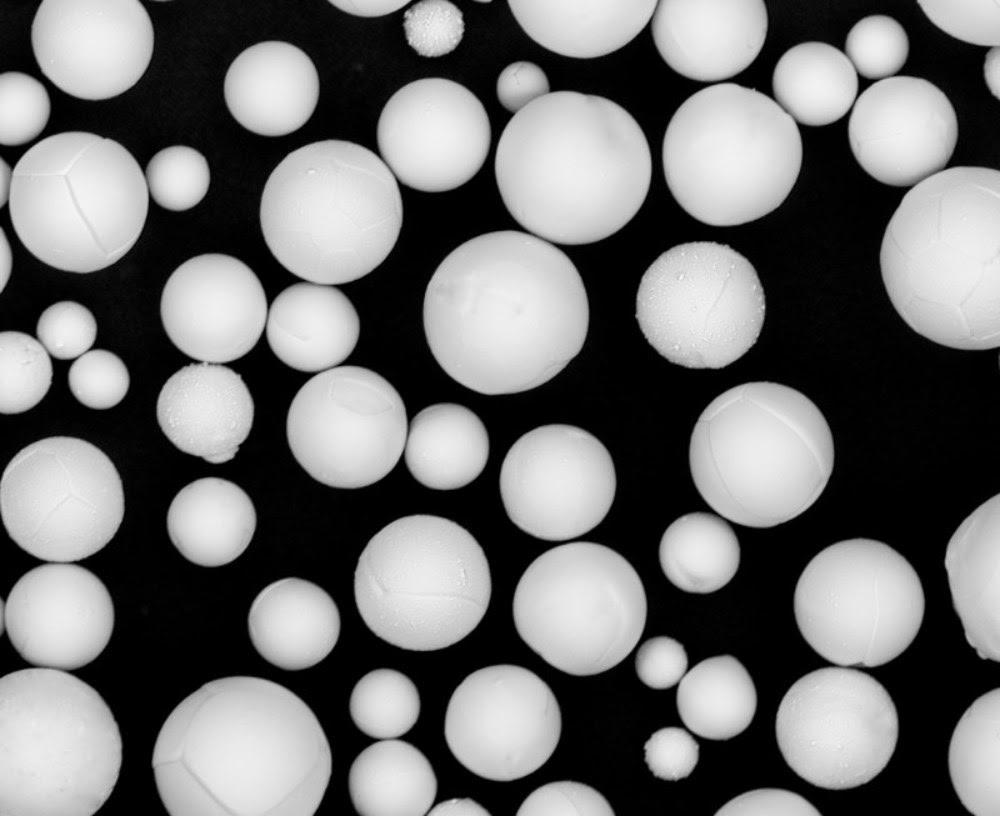 Metal powder materials and technology manufacturer LPW Technology is announcing that their new Plasma Spheroidisation equipment is fully operational and it is now producing their new, high-quality metal powder materials. They have already produced tantalum, tungsten, and titanium alloy powders, including Ti-6Al-4V, using the new Plasma Spheroidisation process. They are also currently developing several refractory metals like molybdenum, niobium and other nickel-based superalloys that will have uses in the aerospace industry and for the production of advanced, high-temperature engines.
Metal powder materials and technology manufacturer LPW Technology is announcing that their new Plasma Spheroidisation equipment is fully operational and it is now producing their new, high-quality metal powder materials. They have already produced tantalum, tungsten, and titanium alloy powders, including Ti-6Al-4V, using the new Plasma Spheroidisation process. They are also currently developing several refractory metals like molybdenum, niobium and other nickel-based superalloys that will have uses in the aerospace industry and for the production of advanced, high-temperature engines.
The process of Plasma Spheroidisation involves applying high energy plasma to metal materials, which will produce uniformly spherical metal powders that result in denser parts and offer greater powder flowability. Not only will this provide users with easier application of the powder material, but it will reduce jams and clogs that can slow down the manufacturing process, create imperfect or flawed objects and cause costly 3D printer downtime. LPW is currently the only company to use Plasma Spheroidisation equipment for applications in the additive manufacturing industry.
“We are hugely excited to have this next generation equipment on site for the benefit of our customers. LPW are constantly reacting to solve our customer’s problems and ensure that we have the right solution to keep them on track. Our Plasma Spheroidisation can produce the best Metal Powders on the market. They are more spherical and cleaner than those currently available,” explained LPW Sales Director Mike Ford.
Metal powders typically have irregular, angular and jagged shapes and sizes that can get caught on each other when being fed through a hose or laid down on a 3D printing bed. The spheroidisation of metal powders is a process that melts and reshapes the jagged metal particulates in-flight. It starts when the powder is sprayed into a stream of induction plasma, which immediately melts the powder in the extremely high temperatures. In their liquid state, the melted powder particles automatically take a spherical shape due to the natural phenomena of surface tension. These sphere shaped, microscopic drops of liquid metal are cooled down rapidly once they exit the plasma plume, resulting in the powder hardening into the shape of the newly condensed spheres.
The primary benefit of producing fine, metal powders with a spherical shape is a dramatic increase in the flowability of the powder material, and the perfectly round shape of the particulate allows the powder to pack itself more densely. When this powder is used on large-scale powder-based 3D printers, the resulting parts will be denser and stronger than when untreated powders are used. Additionally, when compared to conventional gas-atomised powders, the levels of surface contamination are significantly reduced. Not only does that mean that any surplus powder can be reused more often, but it will further increase the flow of powders. It will also produce 3D printed components that are more solid and have enhanced mechanical properties.

Powders that have been through the plasma spheroidisation are far more densely packed than untreated materials.
The metal powder materials produced with the Plasma Spheroidisation technology has an added benefit of making the excess material recyclable, especially after several uses on a metal 3D printer with an increased oxygen content. Previously this surplus material would need to be disposed of after only a few uses, however it can now be sent back to LPW to be converted back into usable materials. LPW will bring the returned powder to their laboratory and comprehensively test its quality, blend multiple batches and re-size the spheres if necessary. Once it has been analyzed, it can be sent into the Plasma Spheroidisation machinery again and recertified. LPW is currently seeking beta-test customers who would be willing to try the recycling powder process. What do you think about this new technology? Discuss in the LPW & Metal 3D Printing forum over at 3DPB.com.
Subscribe to Our Email Newsletter
Stay up-to-date on all the latest news from the 3D printing industry and receive information and offers from third party vendors.
You May Also Like
3D Printing Unpeeled: $5000 Cold Spray 3D Printer, Roland DGA & Living Materials
The AeroForge is a $5000 cold spray metal printer for copper made by a student team at Rice University. In a paper for ACS Central Science a team from Nanjing...
3D Printing Webinar and Event Roundup: April 28, 2024
In this week’s 3D Printing Webinar and Event Roundup, the Ceramics Expo is taking place in Michigan, Stratasys continues its advanced training courses, and SPE is holding a Polymer Characterization...
Meltio Expands Global Reach with New Partnerships in the Americas and Europe
Spanish 3D printing manufacturer Meltio has expanded its sales network across the globe. With the addition of three new partners in the United States, Brazil, Argentina, and Italy, Meltio aims...
US Army Corps of Engineers Taps Lincoln Electric & Eaton for Largest 3D Printed US Civil Works Part
The Soo Locks sit on the US-Canadian border, enabling maritime travel between Lake Superior and Lake Huron, from which ships can reach the rest of the Great Lakes. Crafts carrying...
































